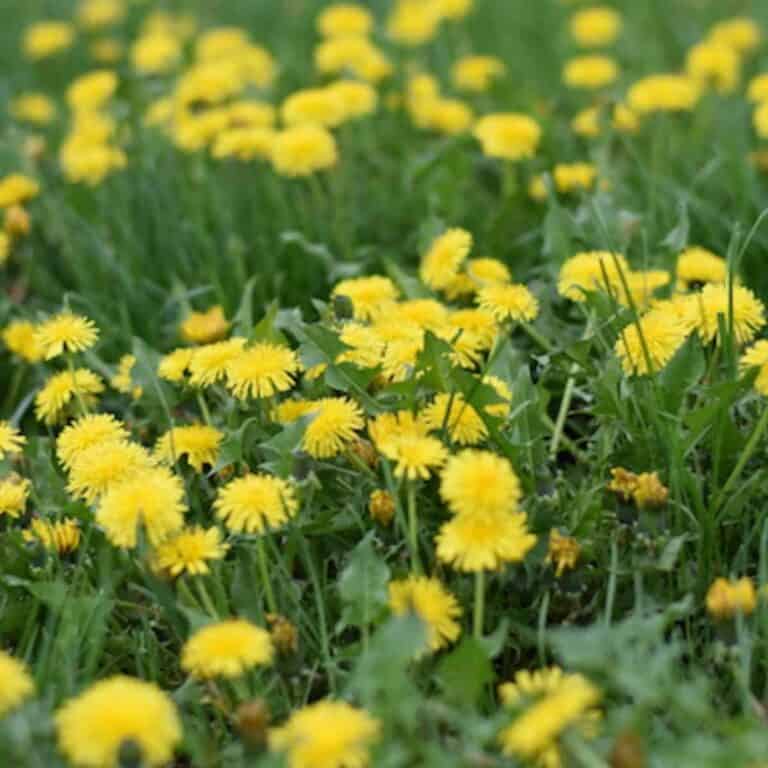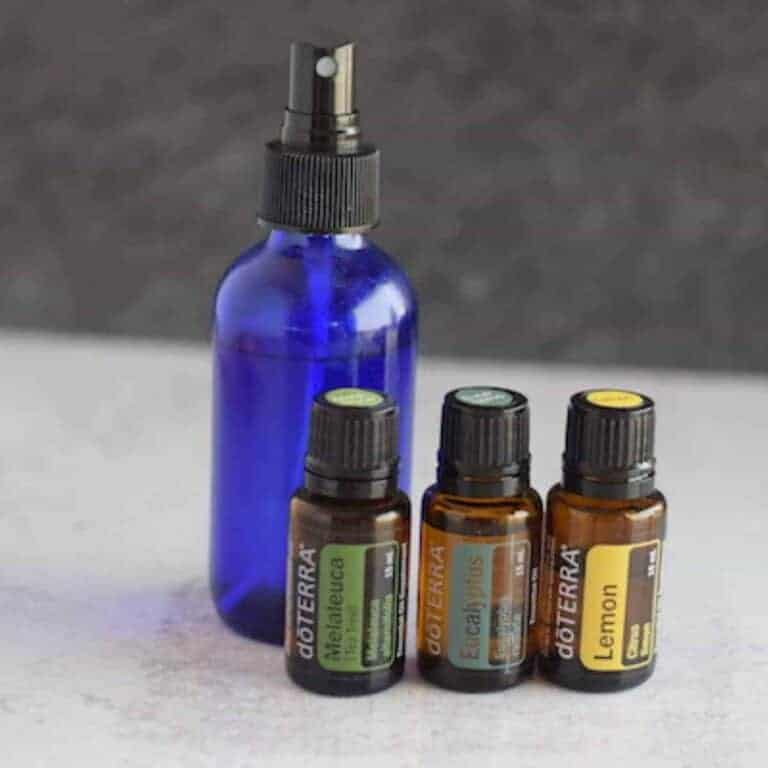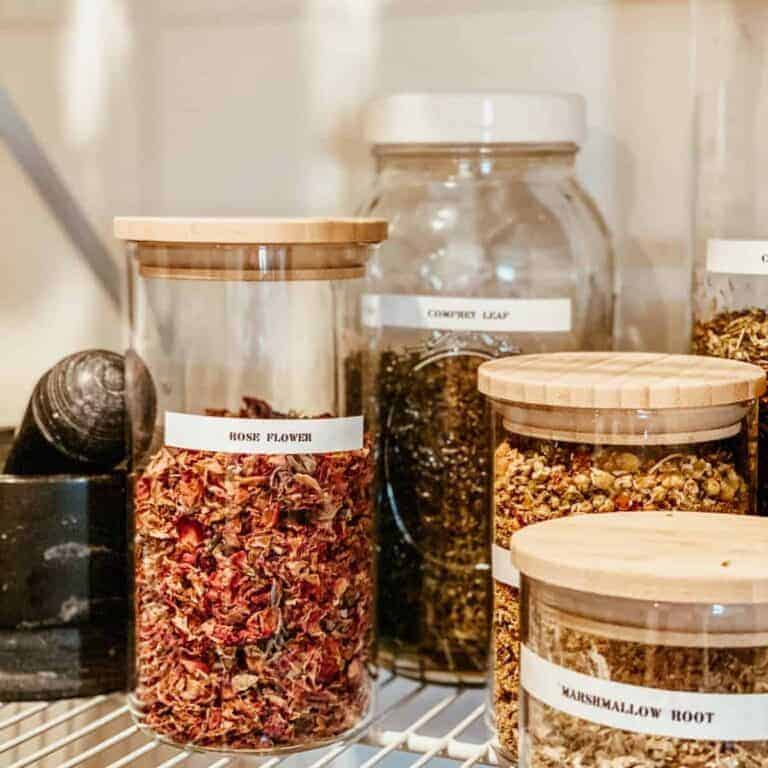15 Best Air Cleaning Houseplants
Did you know that there are a variety of houseplants that can help improve the air quality in the home. Here are 15 of the best air cleaning houseplants!
It’s that time of year, where snow is on the ground and it is bitterly cold out. Around here, the garden is put to rest for the year, but I still want greenery in my life.
Over the years, my love for houseplants has grown. Like anything around the ranch, I don’t want them to just look pretty, I want them to serve a purpose. I’m sharing a few of my favorite houseplants.
A huge goal for my family is to create a more natural home environment. We are on a slow and steady process of making this happen.
Related: The Most Toxic Items in the Home (and what to replace them with)
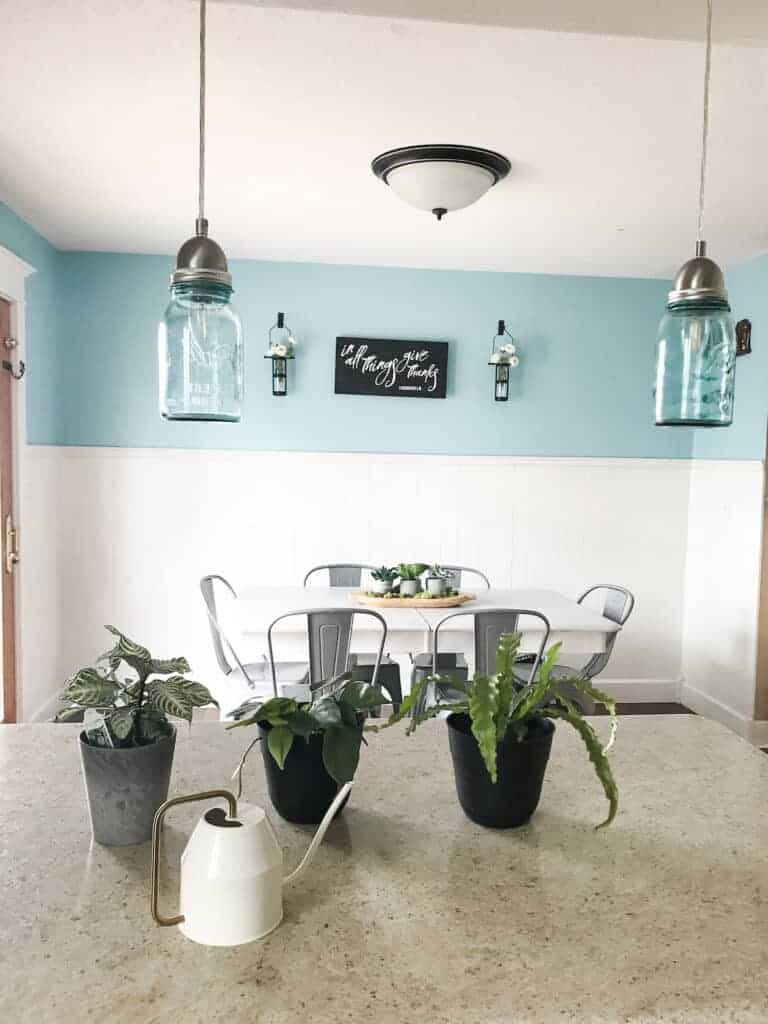
This post has been updated from the original publish date of December 17, 2018.
The Best Air Cleaning Houseplants for the Home
Why add houseplants to your home?
There are many benefits for keeping houseplants in the home. Here are a few reasons why you should add a few houseplants to the home:
- Boosts mood, productivity, concentration and memory
- Reduces stress, fatigue, colds
- Cleans indoor air by absorbing toxins
- Adds life and decor
- They are very therapeutic
They also make a very welcome addition to the office (or home office)!
There really are so many more benefits, but here we will focus on removing toxins and air cleaning in the home. I mean, it is even backed by science.
Something else to note, it is important to avoid mold in your houseplants because that really is just adding toxins back into the air.
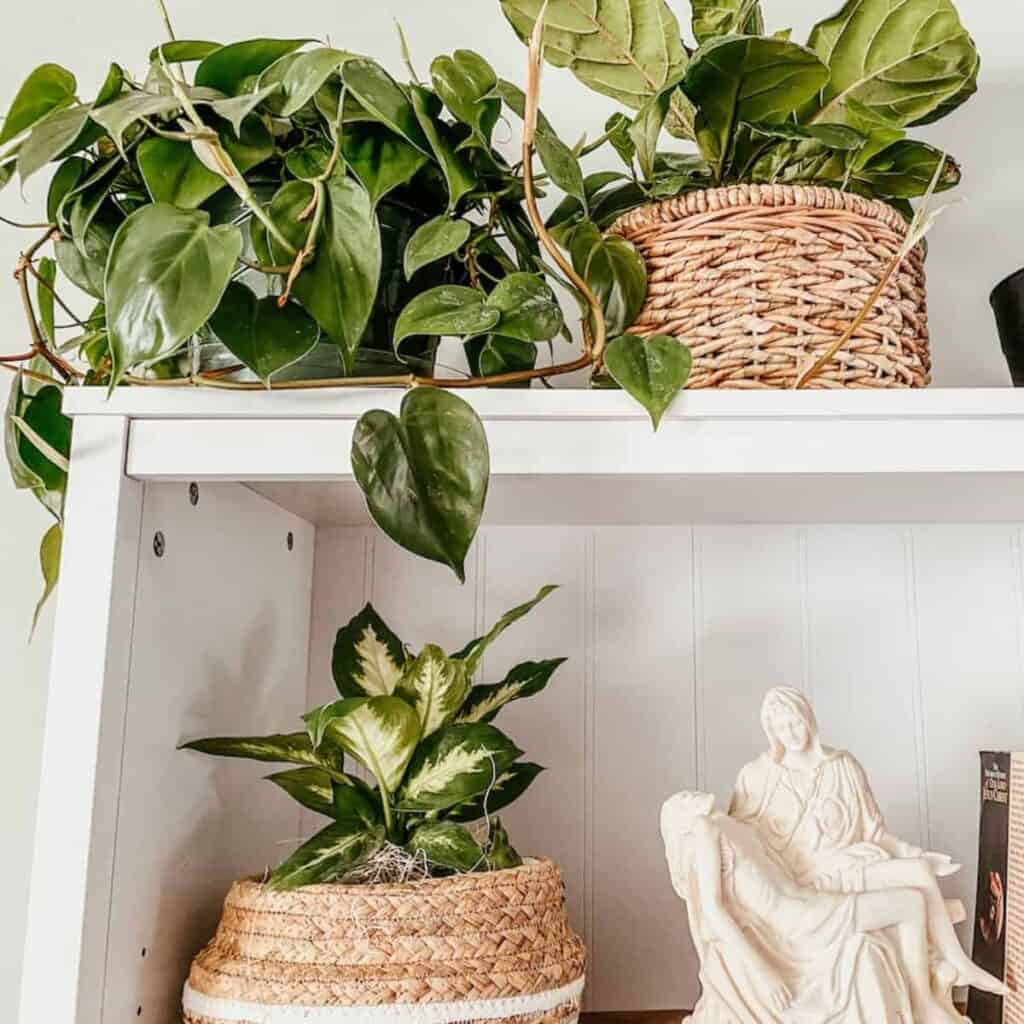
How to Prevent Mold in Houseplants
Houseplants aren’t overly complicated to keep healthy with the proper care. Since we are working on eliminating toxins from the home, preventing mold from damaging our plants and our health is also a focus.
How do we do this? Here’s a few tips:
- Avoid overwatering. Various plants have specific watering needs. Be sure to follow those instructions.
- Use good quality soil for your plants.
- Ensure plants have proper drainage.
- Provide adequate lighting.
- Remove dead leaves & dust plants when needed.
If you suspect mold has occurred with your houseplants, here’s a few tips to get rid of it:
- Carefully remove the mold from the plant.
- If a large amount of mold is discovered, it may be best to repot or even replace the plant.
- Distribute an anti-fungal to the soil to prevent it from occurring again.

So, let’s talk more about these awesome air cleaning houseplants. And let’s discuss a few of their benefits and how to grow them.
Snake Plant
This is one of my favorite houseplants and one of the easiest to grow (especially for beginners) and is technically a succulent.
How to care for a snake plant:
- Allow soil to dry completely between waterings. They don’t like to be overwatered!
- Root rot is the biggest potential issue because of over watering.
- These plants grow rapidly, repotting or dividing can help.
- Snake plants enjoy bright light, even direct sunlight, but also grow well in shady corners.
- Keep in a warm spot above 50 degrees.

Peace Lily
Another favorite around here. I love the white lily blooms that pop up periodically. These are poisonous to both humans and animals, so definitely keep them out of reach of little lands and curious critters. I would also suggest washing your hands after handling them.
How to care for the peace lily:
- Keep the soil moist, but don’t over water.
- Use filtered and room temperature water because peace lilies are sensitive to chemicals and cold temperatures.
- Peace lilies are a tropical plant and do best in warm temperatures. Ideally above 70 degrees. And away from cold, drafty windows.
- Keep in a well lit area, but away from direct sunlight.

Aloe Vera
Another awesome succulent, the aloe vera plant also serves as a great multi purpose plant. The juice from the leaves can help with pain from cuts, scrapes, cold sores, and burns. But be sure not to ingest, same goes for your furry friends because it can be toxic!
How to care for the aloe vera plant:
- Place in bright, indirect sunlight.
- Test soil before watering. Allow the soil to dry at least 1-2 inches deep between waterings. It is recommended to water about every 3 weeks or so.
- Aloe vera plants do best in temperatures between 55-80 degrees.
- Repot when root bound.
- Potential diseases could include root rot, soft rot, fungal stem rot.

Philodendrons
With quite a few varieties, these plants are fairly easy to grow in the home with a few basic care needs.
How to care for the philodendrons:
- Place plant in a bright well lit area, but away from direct sunlight.
- Don’t over water these plants! Allow an inch of top soil to dry in between waterings.
- It may be normal for leaves to yellow as they age, however, several at a time could be a sign of too much sunlight.
- Keep in temperatures above 55 degrees.
- If using a vining variety, add something for it to be supported on.

Spider Plants
These plants are very easy to grow and make a great addition to the home. And they look great in a hanging basket or hanging macrame planter.
How to care for spider plants:
- Keep in bright to moderate indirect light.
- Spider plants don’t like to be too wet or too dry. Keep the moisture even.
- Maintain a good room temperature of about 55-80 degrees.
- They don’t do well with chemicals found in most tap water like fluoride and chlorine. Using filtered water is recommended.
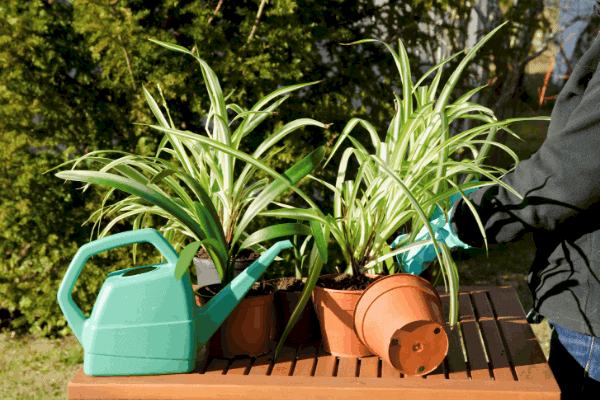
Dracaena
This is another houseplant that is easy to care for. With a variety of options that can grow a couple of feet up to about ten feet, they make a neat little addition to the home. These plants are toxic to animals if ingested.
How to care for the dracaena:
- Allow for proper drainage. The soil should partially dry out between waterings, but be careful not to allow it to become too dry.
- Dracaenas can survive in low to moderate light, but thrive best in bright, indirect light.
- Overwatering and poor drainage can create a potential for root rot.
- These plants are another variety that are sensitive to chemicals like fluoride and chlorine.

English Ivy
There’s just something about an ivy plant. I love the look of them in a hanging basket or macrame, or even placing a plant on a bookshelf with the leaves cascading down. Gives me all the cottage feels. These plants are very easy to care for, but note that they are toxic to animals.
How to care for the English Ivy:
- Place in bright indirect lighting.
- This plant prefers to be in cooler temperature around 60 degrees.
- Allow the top inch of soil dry between waterings.
- Ivy vines attach to surfaces, so be careful where you place them.

Boston Fern
A classic addition to the home and this air cleaning plant is super easy to care for.
How to care for the Boston fern:
- This fern does best with bright, indirect sunlight.
- Place in an area of the home that is between 55-72 degrees. They really thrive on the lower end of that scale.
- They prefer moist soil, but not overwatered. Don’t allow to dry out.
- This is a plant that especially likes humidity.

Rubber Plant
These are another variety of plants that can grow into a cute little tree for the interior of the home. They can be kept in a smaller pot to restrict growth.
How to care for the rubber plant:
- These plants like a lot of bright sunlight, but avoiding direct sun.
- Rubber plants prefer chemical free and room temperature water.
- Allow for the soil to drain properly.
- The leaves of the rubber plant benefit from occasional misting.

Weeping Fig
This air cleaning plant variety is one that doesn’t like to be disturbed too often. It is a good idea not to move it around the home too often. The weeping fig is another variety that is toxic to animals.
How to care for the weeping fig:
- This plant is content with mostly bright, indirect light and some shade during the day.
- They do best in temperatures of about 65-75 degrees. Occasional lower temperatures won’t harm it if it’s not during an extended period of time.
- Allow for proper drainage, and for the top inch to dry out between waterings.
- The weeping fig is another plant that prefers chemical free and room temperature water.

Monstera Plant
The monstera plant is a fairly low maintenance plant to add to the home. It is great for bedrooms because it improves air quality at night by absorbing carbon dioxide and releasing oxygen. Ingesting this plant is toxic to both humans and animals.
The monstera makes such a fun addition to the home and one of my top favorite best air cleaning houseplants.
How to care for the monstera plant:
- The monstera plant thrives in warmer temperatures of 68-86 degrees.
- They like moderate, indirect lighting.
- Allow for proper drainage and water when the top few inches have dried.
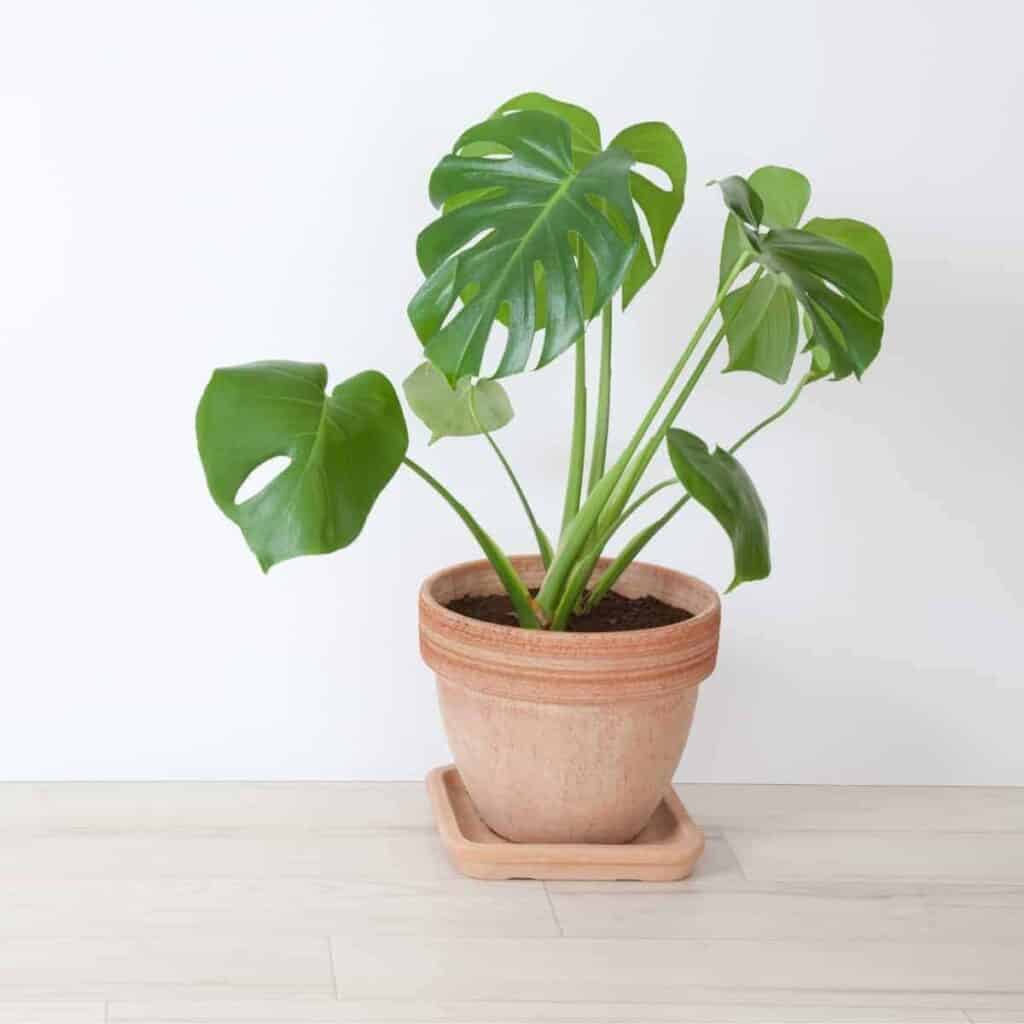
Golden Pothos
This air cleaning houseplant is one of the easiest to care for plants. They look great in hanging baskets or on the top of bookshelves where their growing vines cascade off of.
The vines can trail off in excess of up to 40 feet! This can be maintained with occasional pruning. This plant is poisonous if ingested.
How to care for the Golden Pothos:
- Allow for bright, indirect light.
- These plants like their soil to dry out between waterings.
- Potential for root rot if left in moist soil for too long.
- Preferred temperature of about 60-85 degrees

Air Plants
I adore air plants. They add a little bit of whimsy and are easy to care for. I love adding them to hanging glass planters and placing in front of windows for a little bit of charm and added home decor.
How to care for air plants:
- They need regular, bright and indirect light.
- Air plants do well near a kitchen sink or in bathrooms with a little steam.
- These plants need warmer temperatures above 60 degrees.
- Air plants need regular watering. To water, place in a bowl of water for about 10-20 minutes. Gently shake off excess water.
- If watered for too long these plants can rot.
Here’s a nice variety of air plants!

Cacti and Succulents
Probably one of the easiest to care for air cleaning houseplants and have the same care needs. These are lower on the air purifying list, but they do make perfect additions with other houseplants. And they’re super adorable!
How to care for cacti and succulents:
- Place in well lit areas, avoiding direct sunlight. They love as much sunlight during the day as you can provide.
- They both need watering. Both over watering and under watering can cause harm to these plants. And ensure proper drainage.
- These plants prefer temperatures of about 50-60 degrees. They can tolerate lower temperatures if kept dry.

A Few More Tips for Raising Good Air Cleaning Houseplants
Sticking to a plant watering schedule is helpful for ensuring your plants are watered consistently according to their individual needs.
Consider adding some macrame hanging planters to add more plants to various spaces in your home. Plus, they make really cute decor. Here’s a nice variety of four!
Looking for a starter pack of four of the best air cleaning houseplants, check out this set.
Keep gnats away by either adding a layer of gravel to the tops of plants or by adding this gnat nix to the top soil.
Another added benefit of adding houseplants to the home. Plants absorb the sound around them and help to reduce noise levels. The thicker the leaves, the more sound they absorb.
More common issues with houseplants:
- Not enough light.
- Improper watering.
- Air is too dry.
- Improper fertilizer.


